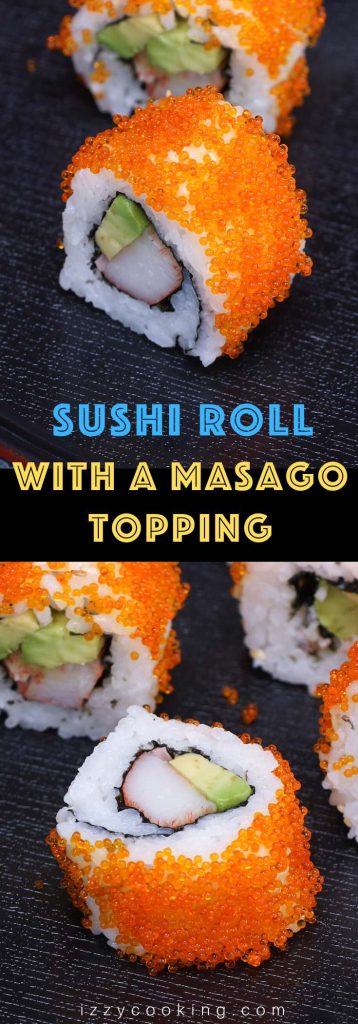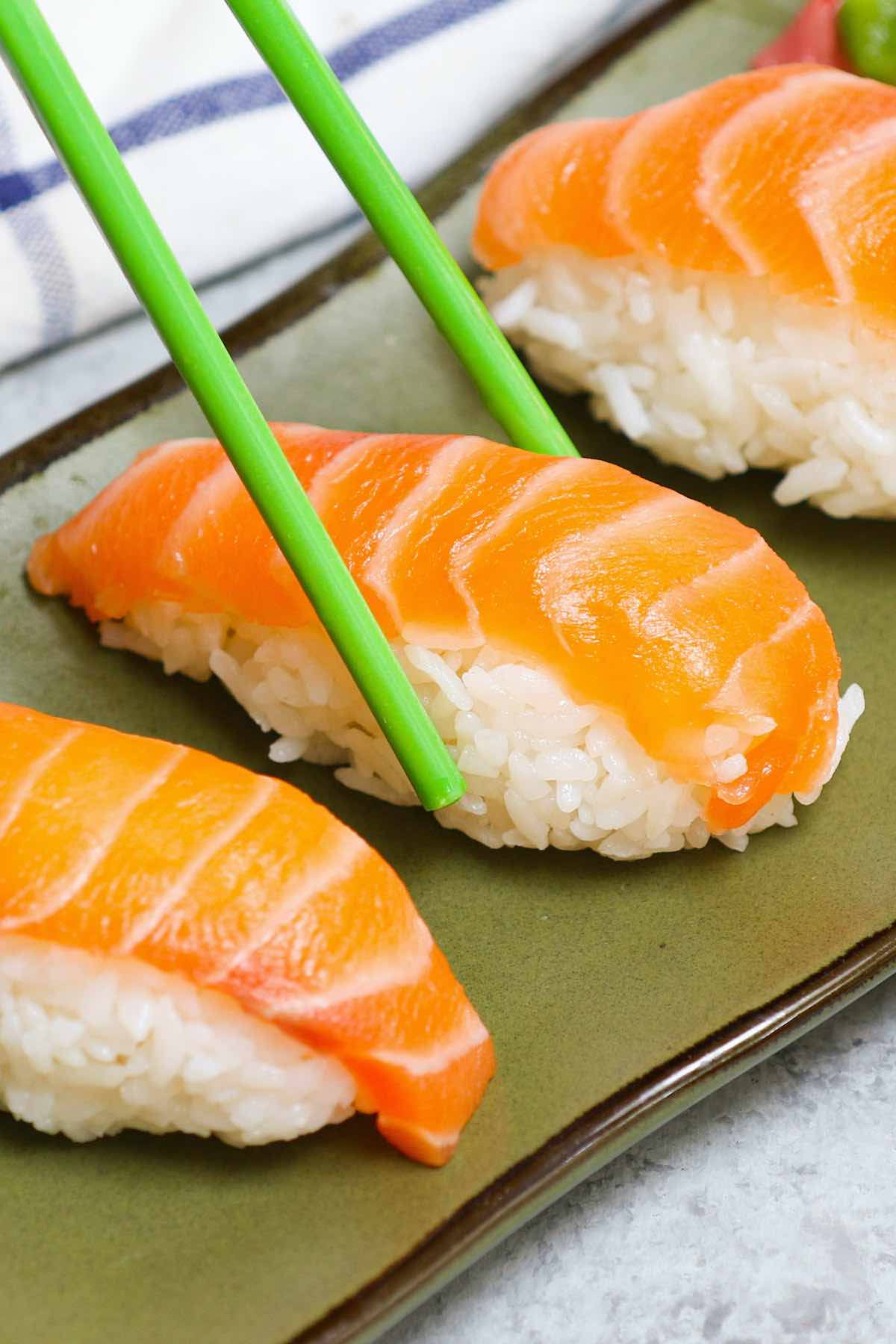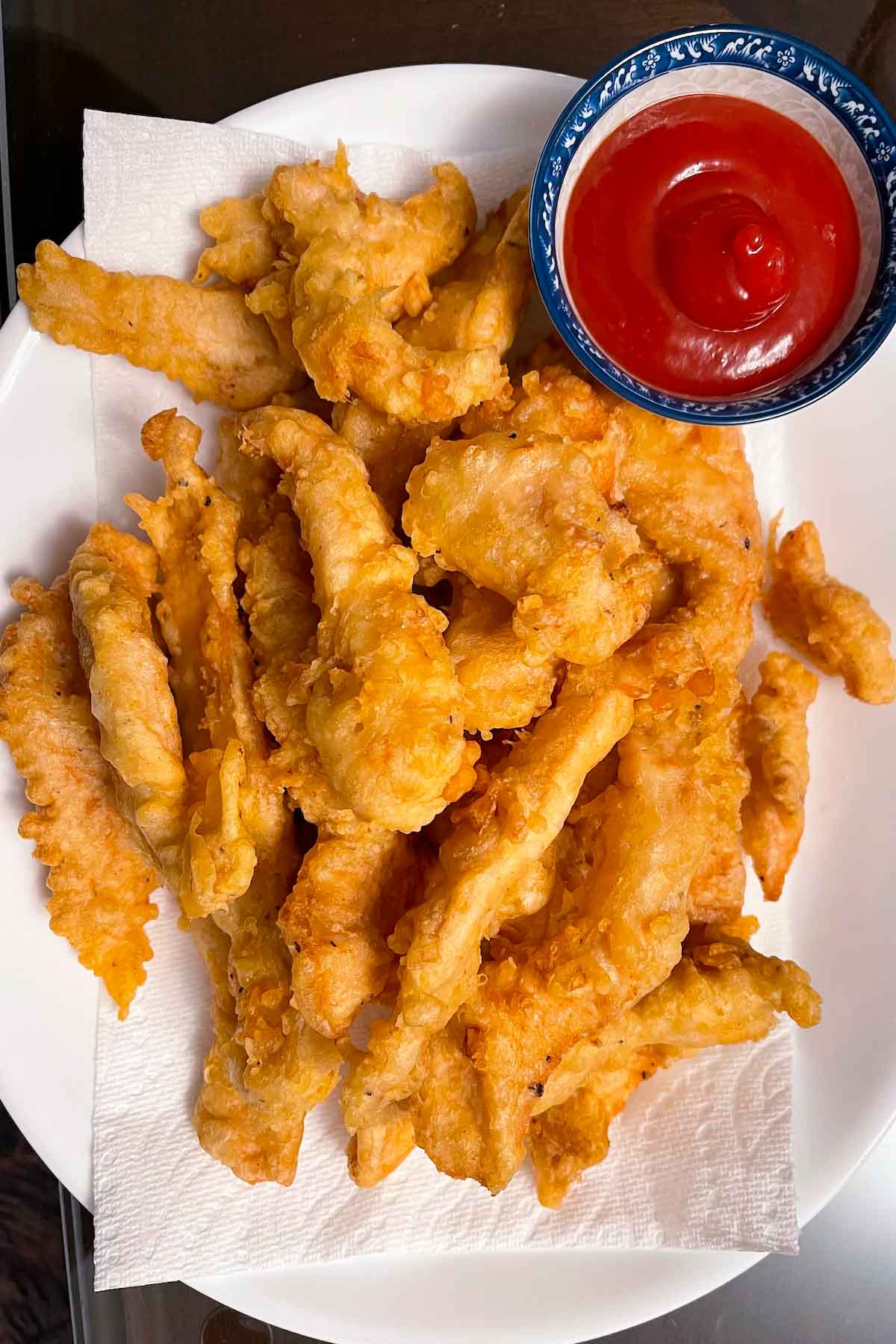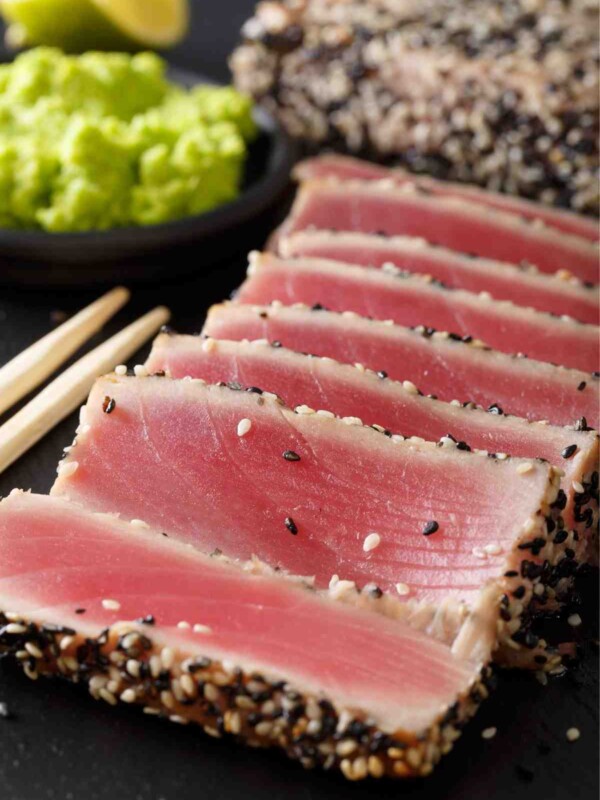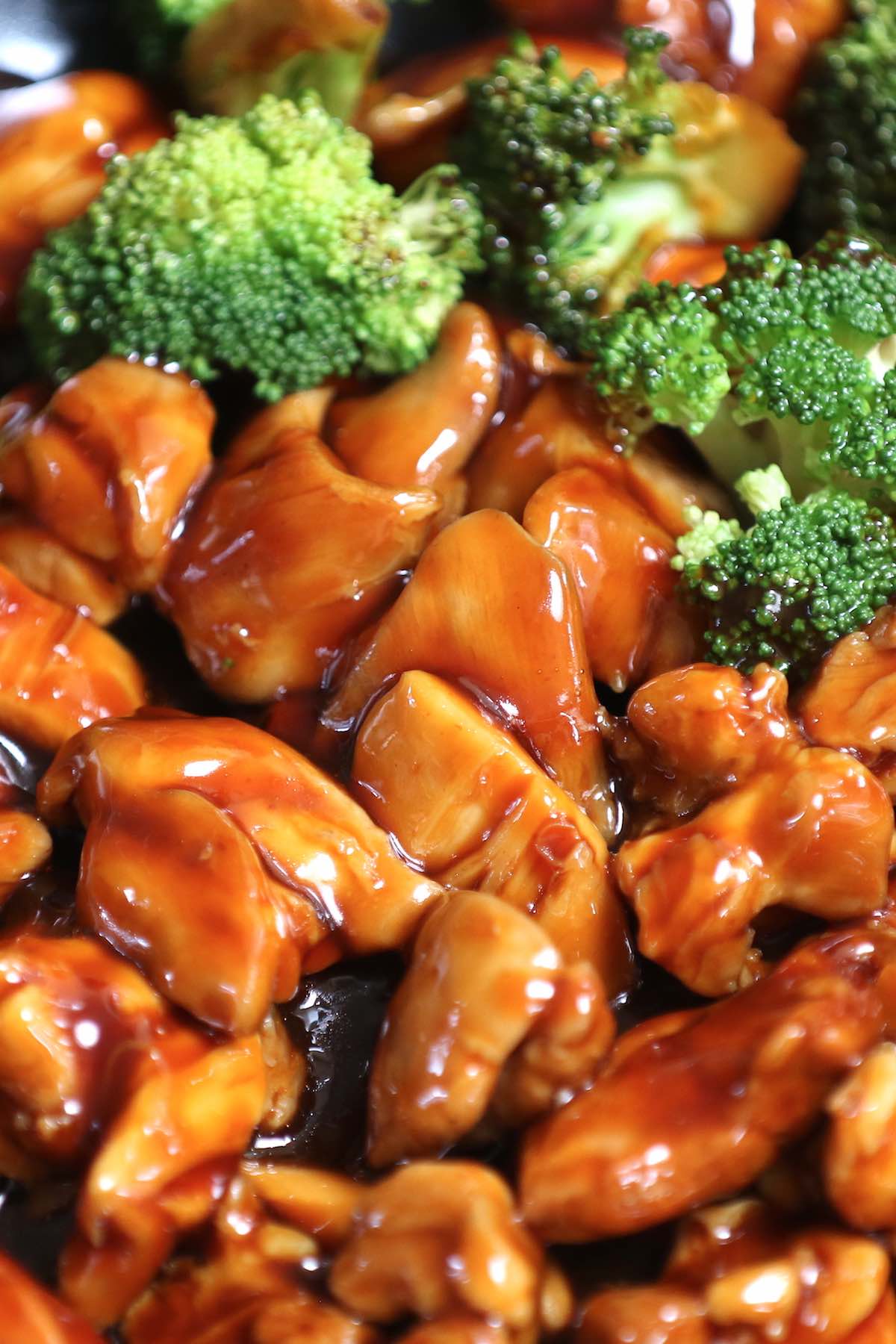What is Masago and Masago Sushi
on Dec 13, 2022, Updated Nov 21, 2023
This post may contain affiliate links. Please read my disclosure policy.
Masago is the roe of capelin, a fish in the smelt family. It’s a popular ingredient in Japanese cuisine because of its distinct look and taste. Masago eggs are very small, and often used as a topping in a variety of sushi recipes. In this post you’ll learn everything about masago and how to make masago sushi rolls.
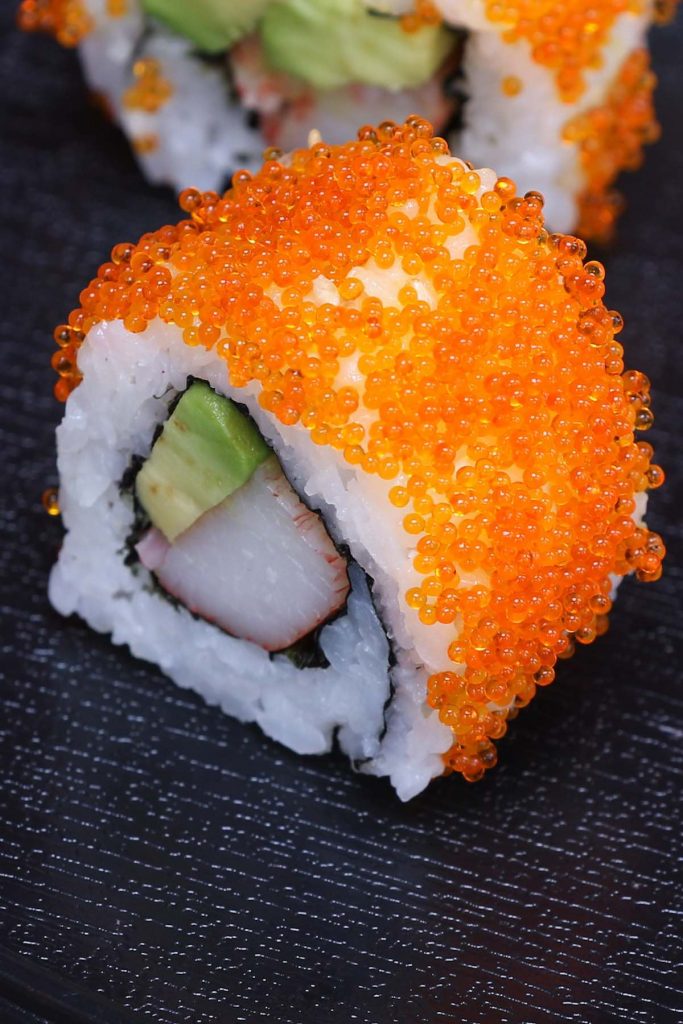
What is Masago (Capelin roe)?
Masago is the Japanese word for edible capelin roe, which is small eggs of fish found in the cold waters of North Atlantic, North pacific, and Arctic oceans. Masago is smaller than most fish eggs and is about 1 millimeter in diameter. Unlike tobiko or ikura, masago has a dull yellow color and is usually dyed to orange color to give it a more attractive appearance.
Masago is often used as a finishing touch and garnish to give sushi rolls or nigiri some additional “pop” of texture and flavor. It can also be mixed with a light cream for the delicious masago sauce.
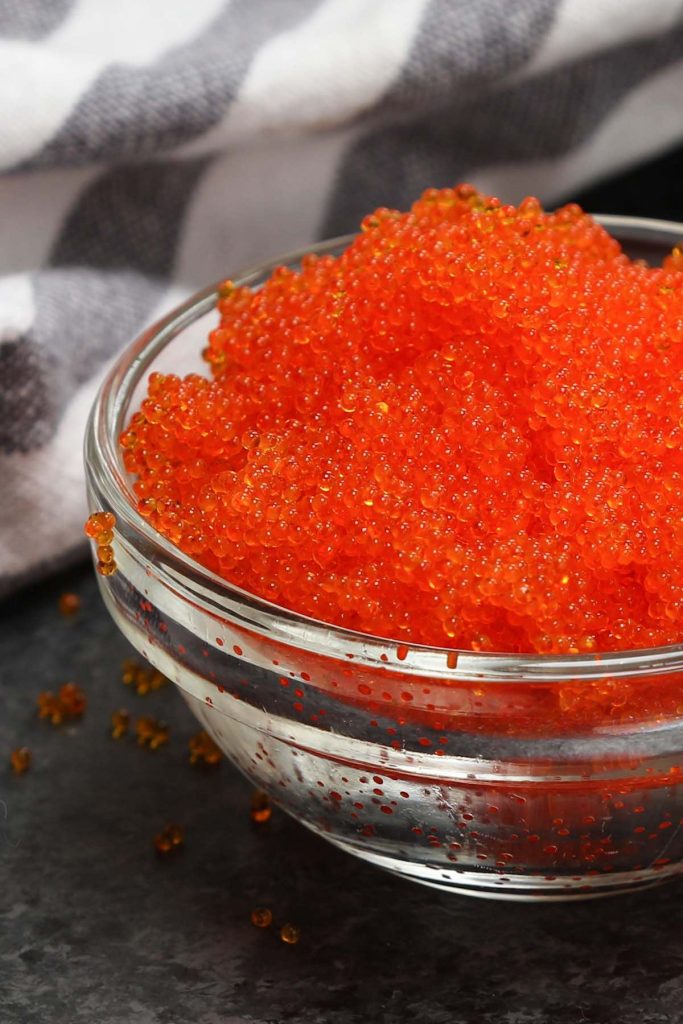
Masago vs. Tobiko
Both are fish roe that are common in sushi rolls. Masago is capelin roe and tobiko is flying fish roe. Masago is slightly smaller with a dull color (before the color dying) while tobiko is larger, brighter with more flavor. Masago also shares a similar taste to tobiko, but it’s less crunchy. A big difference between the two is that masago is much cheaper, and many restaurants use masago as a substitute for tobiko, as they look quite similar.
Tobiko has a bright-red color naturally, and can be dyed to red, black or green. Masago has a dull yellow hue and is often dyed to bright reddish-orange color.
Masago vs. ikura caviar
Ikura also refers to fish roes. Masago is much smaller as it comes from small capelin fish. Ikura is basically salmon roe, and is much larger. Masago is slightly crunchy while ikura will bursts in your mouth when you bite into them.
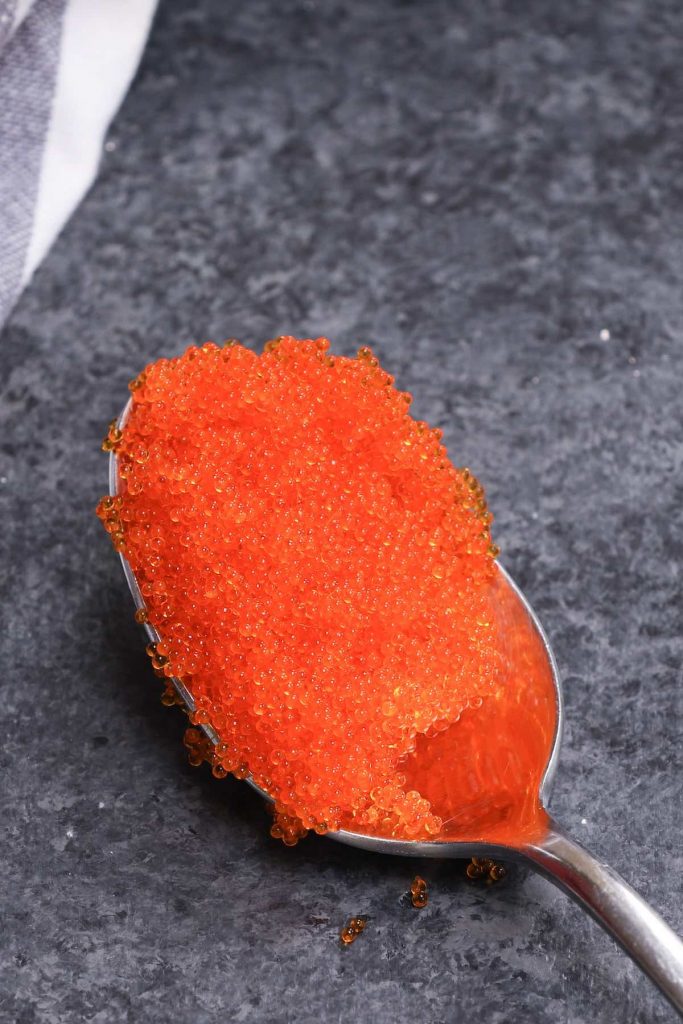
What does masago taste like?
It tastes similar to tobiko, and is a bit salty with ocean flavor. It has a slightly crunchy and sandy texture and goes well with rice and vegetables.
Nutrition and health benefits
Masago is low in calories and high in many important nutrients. There’s about 40 calories for 1 ounce of masago. It’s a good source of omega-3 fatty acids, vitamin B12, vitamin D, magnesium and selenium. The polyunsaturated fats from masago are good for your immune system, heart, hormones, and lungs.
It’s also low in mercury content even though it comes from deep ocean.
Where to buy masago?
You can find masago at most local Japanese grocery stores. Some high-end supermarkets such as Whole Foods often carry it as well. Alternatively, you can order it online from amazon.
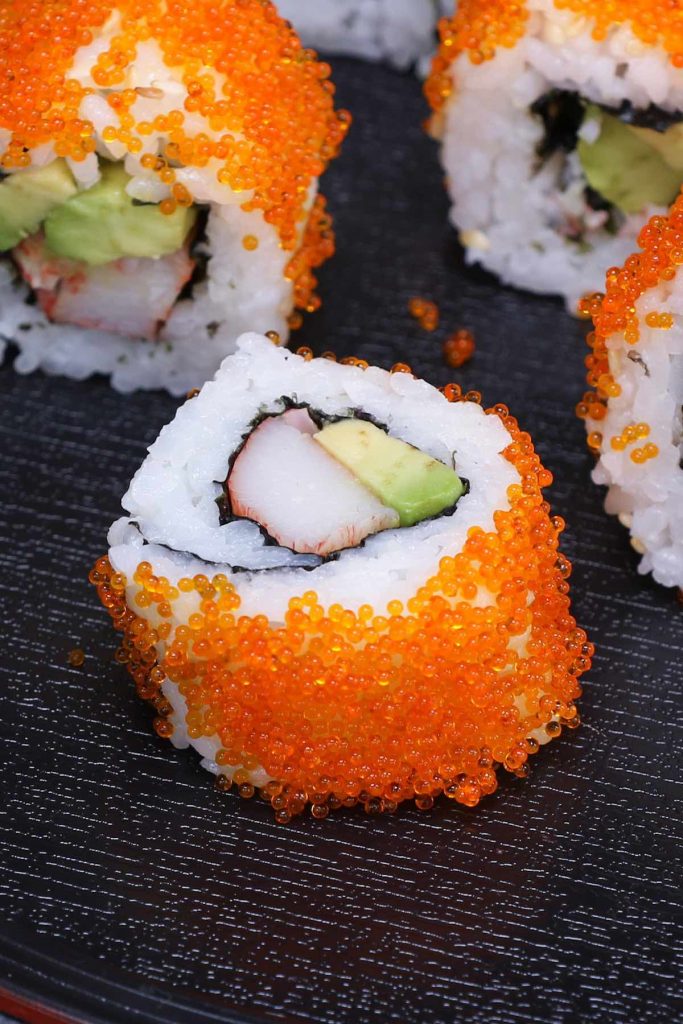
How to store masago?
It’s best to store masago in the freezer as it holds up well frozen. It can last for up to 6 months in the freezer. Once thawed, it can last for about 4-5 days in the refrigerator.
Ways to use masago:
- As sushi roll toppings: this is the most popular use of masago, which adds a bright color and crunchy texture to the sushi roll, such as California Roll.
- Masago sauce: it’s a mixture of light cream sauce and masago for a creamy and delicious sauce, often used on top of Japanese spaghetti noodles.
- Added to the fillings inside the roll: it’s sometimes added to the fillings when rolling a maki sushi to add extra flavor and texture.
- As decorations: masago helps to enhance the look of many dish with its bright orange color, and is an important ingredient to create a lava look for Volcano Rolls.
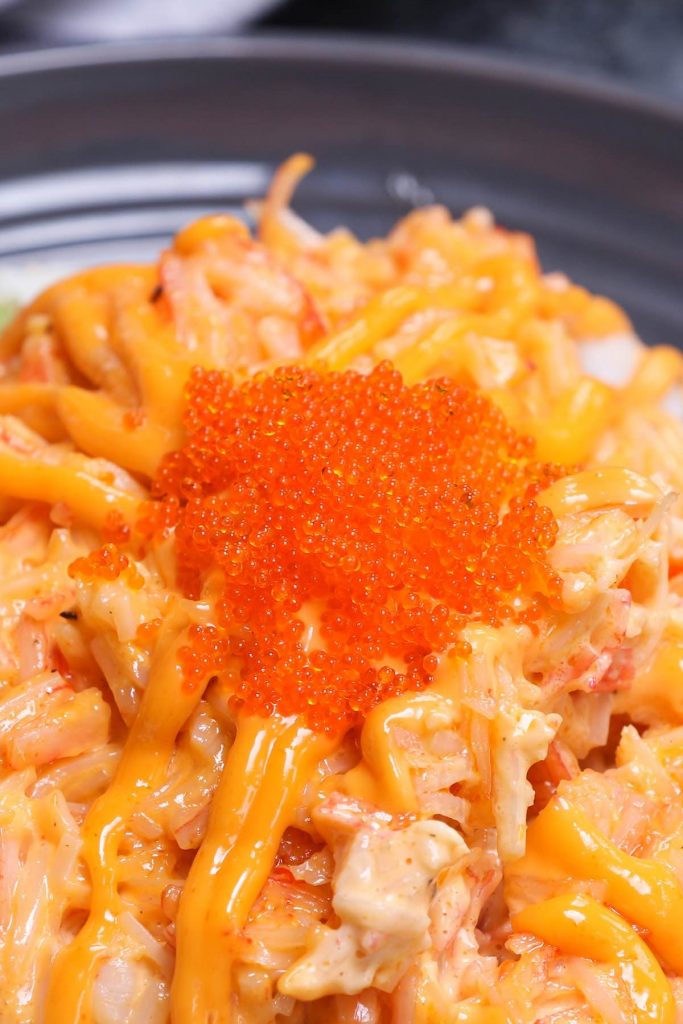
How to make sushi with a masago topping
- Follow the instructions to make an inside-out sushi such as California roll.
- After you cut the roll into small pieces, add desired amount of masago on top of the sushi.
- You can spread the masago out with a spoon or your hands.
Is masago raw?
Yes, masago is the flavored and colored raw edible eggs of the capelin fish.
Is masago safe to eat?
Yes, masago is edible eggs of capelin, but you should avoid masago if you are salt-sensitive or allergic to seafood.
Some popular recipes using masago:
- Boston Roll
- Volcano Roll Sushi
- Japanese Masago Spaghetti
- California Roll with Masago Topping
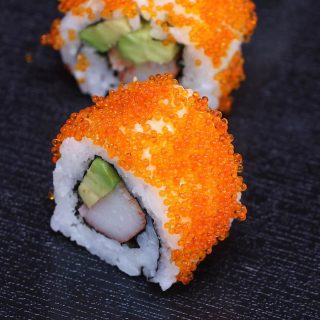
Masago Sushi
Ingredients
For Sushi Rice
- 1 cup sushi rice, short grain sushi rice
- 1 cup water
- 1 ½ tablespoons optional sushi vinegar, or mixing 1 tablespoons rice vinegar, 1/2 tablespoon sugar, and 1/2 teaspoon salt
For Masago Sushi
- 4 oz imitation crab
- 1 avocados, cut thin slices
- 2 sheets nori, seaweed
- 1 tablespoon masago
Instructions
- Cook sushi rice: Rinse the rice and add it to the rice cooker together with water. Once cooked, transfer to a large bowl and let it cool down slightly. When it’s still very warm, stir in the sushi vinegar or the mixture of rice vinegar, sugar, and salt.
- Make the roll: Lay out the bamboo mat with a piece of plastic wrap on top (this will prevent rice from sticking to the bamboo).
- Fold the nori sheets in half and split them using a pair of scissors.
- Place half of the nori sheet on top of the bamboo.
- Take about 3/4 cup of cooked rice and spread over nori evenly. Use your hands to press it down gently. (You can dip your hands in vinegar water to prevent sticking.)
- Flip so that rice is facing down and nori facing up.
- Place imitation crab and avocado slices on top of the nori.
- Place the thumbs underneath the bamboo mat and lift the edge up and over the filling.
- Roll the bamboo mat away from you and apply some pressure to tighten it up. Keep rolling until the ends meet.
- Transfer the roll onto a cutting board, and cut each roll into 8 even pieces.
- Add a masago topping: Spread masago on top of each sushi piece. You can use your hands to spread it out evenly. Serve and enjoy!
Nutrition
Nutrition information provided is an estimate only and will vary based on ingredient brands and cooking methods used.
